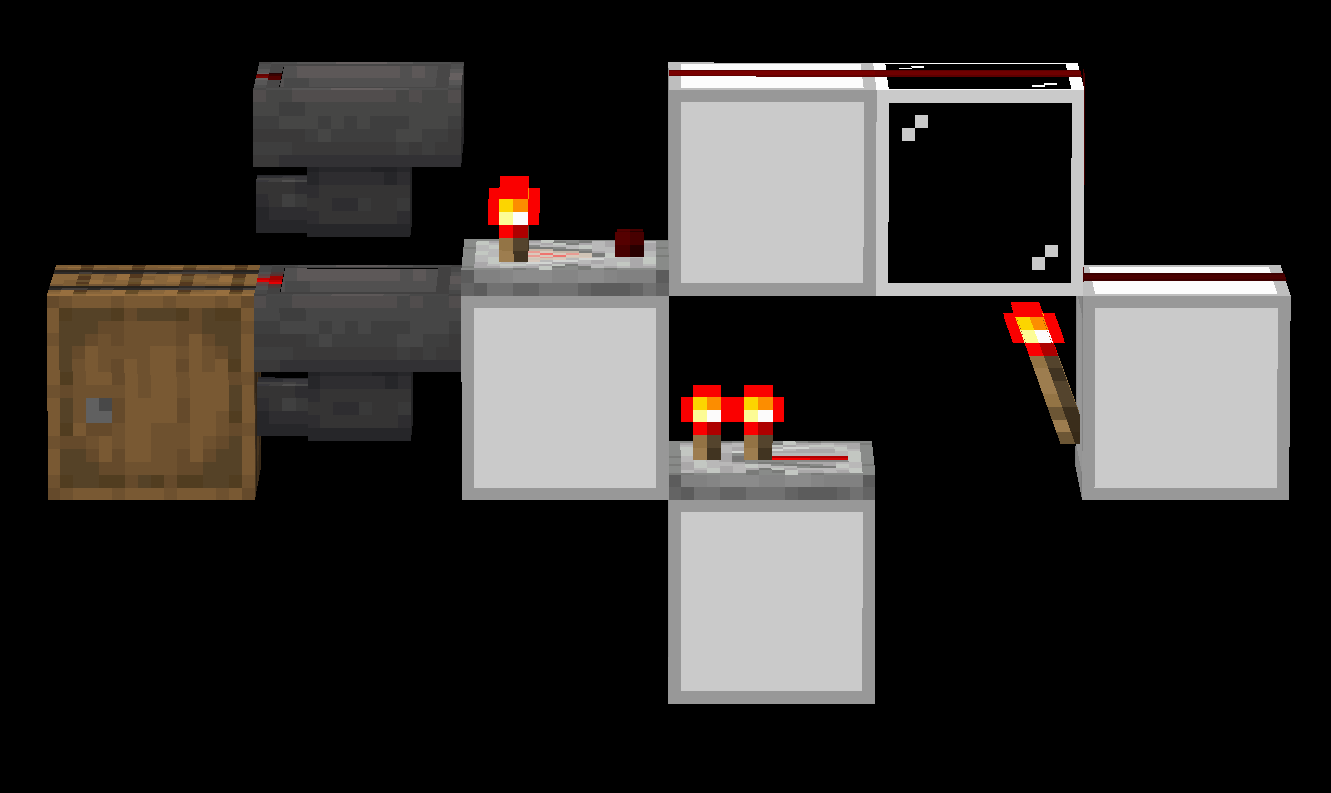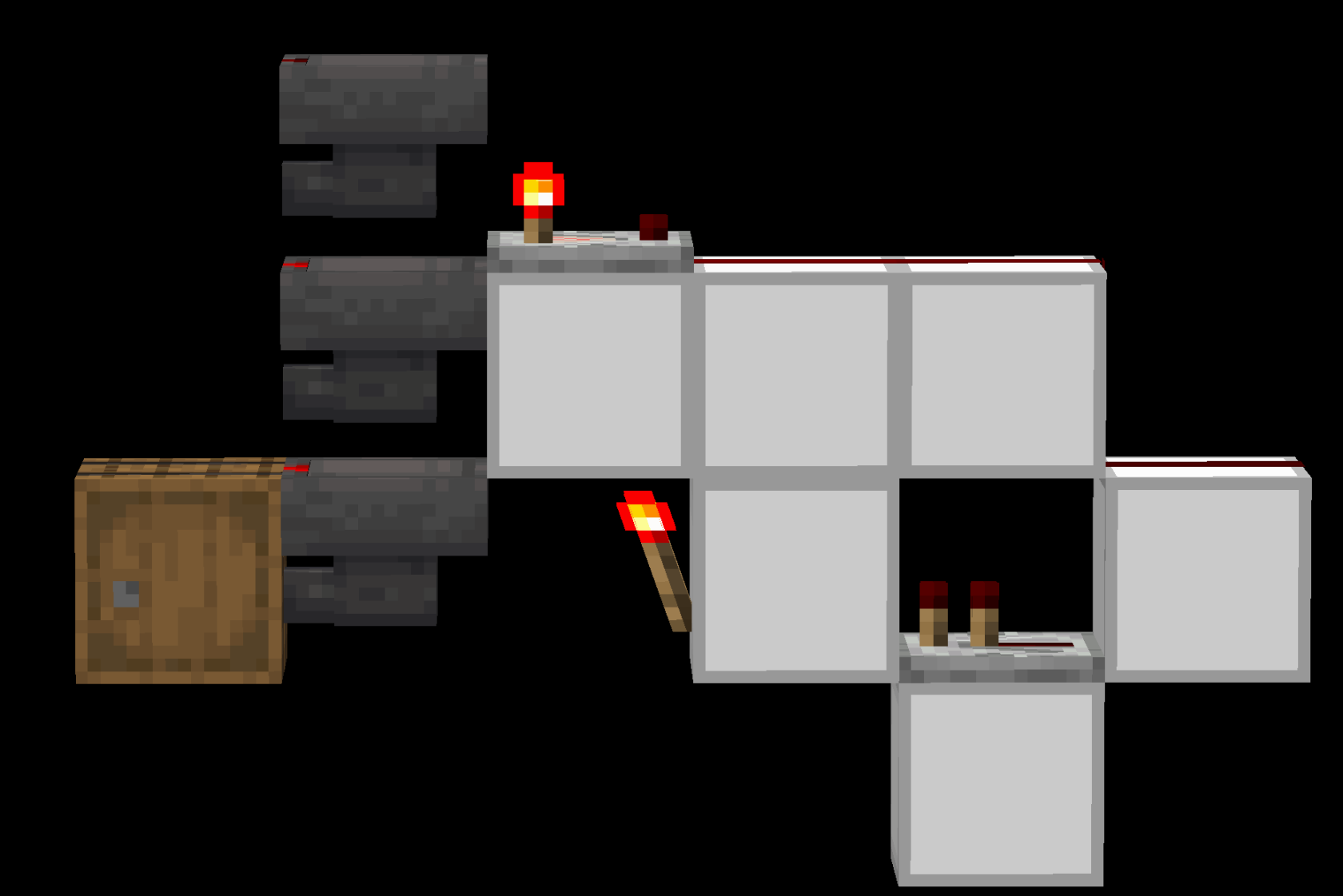Stackable Sorting
Stackable item sorters separate items by type are the very base of of storage tech. Nearly every storage tech contraption uses an item filter or a variation on the concept.
How Item Filters Work
Most item filters utilize the property of items that only allows them to stack with items of the same item type and name. Hoppers are the main method for checking this. To sort a single item type, each slot of a hopper must be filled, as to only allow the item that will be sorted into the hopper. The last 4 slots are filled with a different item type/name. These are called "filler items". It is recommended that the filler items be named in an anvil to avoid accidental interference. The first slot contains the item that should be filtered.
For example, the following image shows the inventory of a filter hopper that will sort sticks. Note that the barrier items can be replaced with any other item.
A second hopper is placed beneath the filter hopper. The filter hopper cannot face into any other inventories as it is always unlocked. The hopper below it however is locked by default. This second hopper is used to remove any new items that enter the filter hopper. If an item enters the filter hopper, it means that the item type matches what is being sorted.
To know if an item has entered the hopper, a comparator is used to read the inventory fill level of the filter hopper. The hopper is filled in a way that if a single new item enters the filter hopper, the signal strength from the comparator will increase. This is used to unlock the second hopper and remove any new items until the item count is dropped below the threshold to lock the second hopper again.
 The absolute simplest and cheapest item filter possible. The hopper on the top contains the inventory shown above.
The absolute simplest and cheapest item filter possible. The hopper on the top contains the inventory shown above.
Although the above filter is very cheap, it has some issues. Namely that it is not compact. The design cannot be repeated in a compact manner. The following filters are a solution to this.
Variations on the Item Filter
Signal Strength 3 Item Filters
The easiest way to make a compact. repeatable and overflow-proof (will not break if its output inventory is full) item filter is to use signal strength 3 (SS3) filters. These filters are named after the signal strength threshold they must meet to move items. To enter signal strength 3, a hopper requires at least 46 (64 stackable) items inside its inventory. Because of this, SS3 filters top hoppers have a different prefill than other filter types.
 The filter hopper inventory on an overflow-proof SS3 item filter.
The filter hopper inventory on an overflow-proof SS3 item filter.
The following two images are common versions of SS3 filters.
The above filters are versatile and easy to use because of their ease of tiling. As long as the filter hopper prefill is done correctly, they can be placed directly next to each other without any interference.
 5 TechRock item filters tiled. All 5 slices work independently of the others.
5 TechRock item filters tiled. All 5 slices work independently of the others.
Double Hopper Speed Item Filters
A major limitation of the basic item filter is speed. A single hopper can only move 2.5 items per second. This is refered to as Hopper Speed, or HS for short. A single hopper is 1xHS (one times hopper speed) or 9,000 per hour. Despite how fast 9,000 items per hour sounds, many farm exceed this number easily. To avoid needing more filters, it is possible to speed up the rate that a single filter can move items. It is usually easiest to speed up a filter to double the rate of a single hopper by having the filter hopper push items at the same time the second hopper is pulling from them. Note that these 2xHS filters are not practical for main storage systems and are best used as sorting in farm outputs.
The following images are common versions of 2xHS item filters. Special prefill is marked as required per hopper. The output is split into 2 different 1xHS streams.
Piston-based 2xHS item filter. Trading low prefill for a piston.
A variation on the ImpulseSV filter, works at 2xHS. Note that the shovels may be replaced with named items, as long as they are a different name than the filler items in the filter hopper.
Signal Strength Independence





